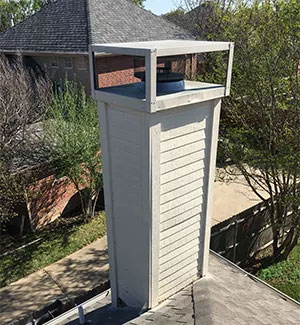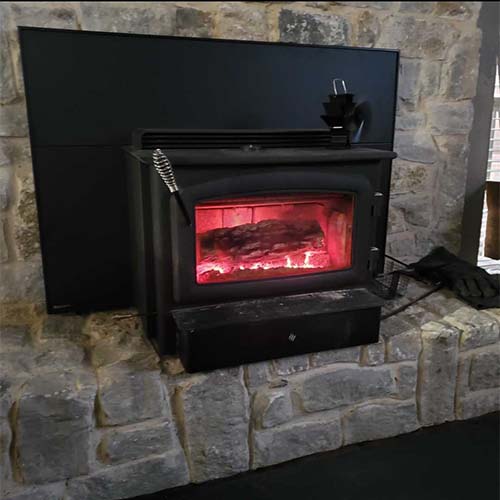There’s no denying fireplace inserts have many benefits. They’re known for their efficiency (allowing you to experience more heat output and lower energy bills), they make switching fuel types a lot easier, they’re better for the environment, and with so many design options to choose from nowadays, aesthetics is never an issue.
Now, when it comes to installing an insert into a masonry fireplace, there aren’t too many bumps or issues that should arise. Unfortunately, this isn’t the same case with a prefabricated unit. Learn more about this process and our recommendations regarding it below.

Look Through Your Instruction Manual
If you opened the instruction manual for your prefabricated unit right now we’re guessing it would say something indicating that no modifications should be made to the unit that could result in a structural fire. So, what does this mean exactly?
Well, let’s start by explaining how your prefabricated fireplace cools itself down. Every system will have an outer pipe surrounding their flue, as well as a space between the brick paneling and the metal on the outside of the unit. Both of these areas are designed to draw in cool air, ensuring the system doesn’t get so hot that a fire occurs in your home.
So, what happens when you install a wood-burning insert? These cooling processes are blocked, preventing your system from cooling down appropriately. This can lead to overheating and is likely to cause structural fires.
In the end, every prefabricated fireplace has certain clearance requirements that need to be adhered to. Adding in an insert can alter these clearances, putting the homeowner at significant risk.
Not All Sweeps Agree…
One thing we hear from time to time is homeowners saying that another sweep said they’d be fine putting an insert into their factory-built fireplace. It’s a practice that is often debated among chimney sweeps, hearth professionals, and even the manufacturers of the products.
The fact is that there is no proper testing method that ensures a prefab unit will be safe to use after installing an insert. The Underwriters Laboratory (UL) tests prefabricated fireplaces one certain way and factory-built inserts another way, and they don’t always receive the same evaluations. Because they go through different processes, there is no way to guarantee that combining any two of them would result in a safe and functional fireplace.
Could we install the insert, then perform new tests? Unfortunately, this is another thing the UL doesn’t have any standards for testing. It’s simply not an option and trying it out in your home isn’t worth the risks involved.
Unfortunately, a lot of uneducated or non-certified sweeps have completed these types of installations regardless of the risks involved. Because of this, it is imperative to only follow the advice of a CSIA-certified sweep. We would dare to bet that any sweep that’s gone through all of the proper training and education would advise against this practice.
What if My Manufacturer Gave the Go-Ahead?
Some homeowners read through their manufacturer instructions only to realize it does, in fact, say that installing an insert can be done. In these cases, keep your eyes open for that tiny paragraph saying you must get permission to do so. This is the manufacturer’s way of ensuring they aren’t held responsible if something goes wrong.
And any certified sweep isn’t likely to offer that necessary permission.
Also, when a manufacturer says their insert is approved for installing into a prefabricated fireplace, it doesn’t automatically mean this process has been tested. It only means there are no tests disproving it.

So, What’s the Best Solution for Me?
When it comes right down to it, installing an insert into your prefabricated fireplace just isn’t the most appropriate or safest route to take. So, what’s the best alternative solution? Well, if you want the efficiency of an insert, you’re going to need to replace your fireplace first.
This may seem like a big investment, but it’s the best option for getting a system that will stand the test of time and function as safely as possible. When all is said and done, you’ll experience more efficiency, lower energy bills, and your home’s value will increase significantly – well worth it!
And if you work with our team, we can help you find the best option for your needs. Pellet stove inserts are growing in popularity, but a wood-burning unit may be more ideal if you’re looking to use your system in the event of a power outage. In the end, every fuel type has its pros and cons, and we would love to go over those with you.
Give Us a Call Today
Ready to get set up with the system of your dreams? Call today! Our CSIA-certified crew is here for you through it all.

Recent Comments